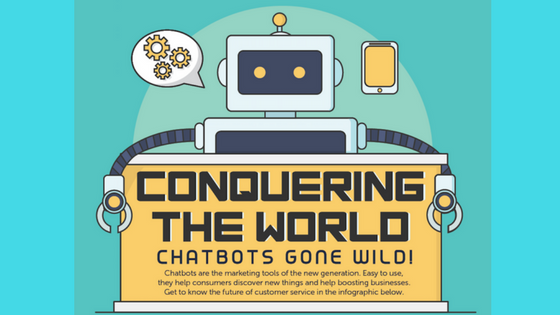Chatbots are everywhere. They offer automated customer support, provide advice and information to your staff, explain processes to new users and more. At the same time, online interactions are being transformed through technologies like augmented reality and virtual reality and by the explosion in the use of mobile devices. But how can these trends be combined to create the kind of highly personalized user experience your clients and coworkers are looking for? With a new-generation virtual assistant, that’s how!
The return of the avatar
This year, avatars are making a big comeback. The proof? The major players are using them! Facebook is developing a tool that can automatically generate a custom avatar from a photo, while Apple has already introduced avatars in its new iPhone X.
Avatars like these allow users to personify their moods and their identity, enabling them to react quickly to current events or a particular situation. For a company, using an avatar reinforces its brand image and humanizes its interactions.
Incidentally, it’s one of the challenges addressed by the ARIA-VALUSPA (Artificial Retrieval of Information Assistants – Virtual Agents with Linguistic Understanding, Social skills, and Personalised Aspects) project: this new-generation conversational agent boasts an expanded evaluation grid and more finely tuned perceptions. The chatbot thus becomes capable of expressing emotions, adopting non-verbal behaviors and, in some situations, even interrupting the person it’s talking to!
In short, ARIAs are much more than simply virtual assistants: they incorporate social aspects into their interactions with users. The chatbot is imbued with increased sensitivity and can reproduce the characteristics of a genuine interaction between two human beings.
A virtual assistant with proactive behaviors
As a direct consequence of the development of avatars, chatbots are no longer satisfied with merely answering questions, but instead have become bona fide tools in the hands of marketing departments everywhere. An intelligent animated avatar can interact proactively and adopt the appropriate behavior depending on the person it’s speaking with.
For example, this type of virtual assistant is central to the marketing strategy of the Canadian insurance company Ignite. A chatbot in the form of an animated robot intervenes in accordance with the various stages of the user’s search for auto or property insurance on the website. In an indispensable preliminary step, the Ignite marketing team programs all of the interventions of the chatbot, named “Igins.” With a hand gesture, it lets the user know that it may be of assistance.

What’s next?
Just as in our day-to-day interactions, it’s important for the exchange to be unobtrusive. As a result, it’s left up to the user to make the decision to interact with the chatbot, in which case Igins knows exactly what to say, based on the user’s queries and browsing behavior.
Scripting the chatbot’s dialog
If Igins intervened at the wrong time or provided the wrong responses, the chatbot wouldn’t be fulfilling its purpose. Its effectiveness rests on the quality of the interaction scenarios that are established upstream, depending not only on the intentions of the user, but also on the objectives of the marketing team.
This scripting consists of creating a type of role-play in which the avatar interrupts or responds to the user, depending on the situation. The interactions may be either verbal or non-verbal: for example, during a waiting period, Igins might do exercises or start dancing in order to distract the user, while also establishing a friendly rapport. It’s a great strategy for preventing the loss of a potential client during an important phase of the transaction!

Empathy and expressiveness for an enhanced user experience
Through its mischievous, playful interactions, Igins adapts to the users, which in the case of the Ignite insurance company consist primarily of gen X. An empathic avatar will therefore play upon all of its human aspects, both verbal and non-verbal, in order to personalize the interaction.
In a different context, Marlie, the virtual collector for CenturyLink, a US telecommunications company, uses intonation and facial expression to reassure clients as they pay their bill. Each phase of the transaction is therefore scripted to provide the appropriate explanations calmly and amicably.

While this expressiveness may take numerous guises, it doesn’t necessarily have to extend to a humanized character. In fact, some companies prefer not to “incarnate” their conversational robot. In order to respond to these varying needs, the company Living Actor works on all aspects of expressiveness:
• The personality of the virtual assistant, conveyed by its style, tone of voice and expressions
• Or a more abstract, but equally expressive representation, as illustrated in the illustration below by Chad, a conversational robot recently developed by Living Actor.

It’s obvious that chatbots are no longer simple software programs designed to understand a question: they have become full-fledged marketing tools capable of providing a premium service to the user and representing your company, respecting its identity and unique characteristics. This combination of language and behavioral scripting technologies makes it possible to forge a genuine relationship between a company and its clients or employees.
What’s the future of online interactions? Restoring humanity and empathy to their rightful place at the center of the exchange for a more personalized user experience!












